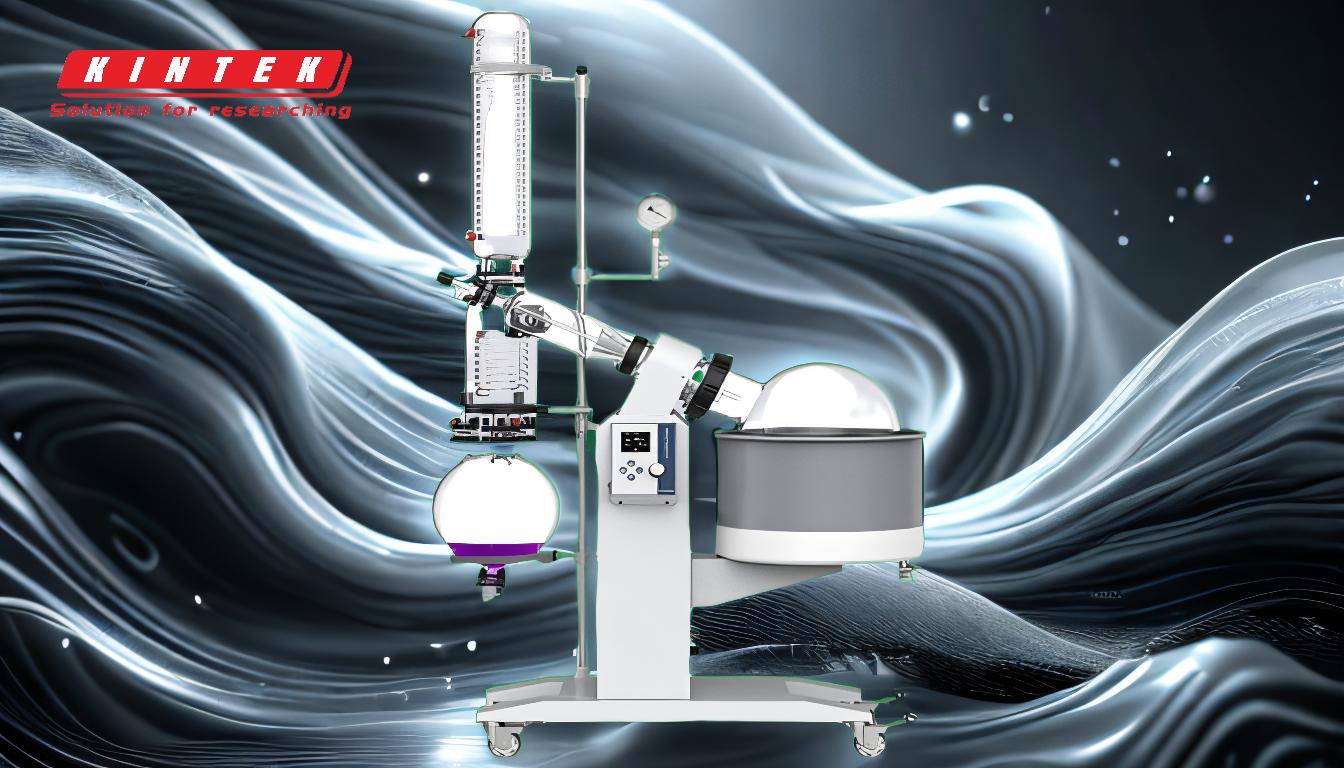A rotary evaporator, or rotovap, is a device designed to remove solvents from samples through evaporation under reduced pressure. It does not increase pressure; instead, it operates by creating a vacuum to lower the internal pressure within the system. This reduction in pressure lowers the boiling points of solvents, enabling efficient evaporation at lower temperatures. This makes the rotovap ideal for heat-sensitive materials and ensures faster solvent removal without risking thermal decomposition. The rotovap is widely used in laboratories for its efficiency and gentle handling of samples, particularly in organic and manufacturing settings.
Key Points Explained:

-
Function of a Rotary Evaporator:
- A rotary evaporator is primarily used to remove solvents from samples through evaporation.
- It is particularly useful for separating low-boiling solvents from solid compounds at room temperature.
- The device is designed to handle heat-sensitive materials, ensuring minimal thermal decomposition.
-
Role of Pressure in a Rotary Evaporator:
- The rotovap operates under reduced pressure, created by a vacuum system.
- This reduction in pressure lowers the boiling points of solvents, allowing evaporation to occur at lower temperatures.
- The process is faster and more efficient compared to evaporation at atmospheric pressure.
-
Does a Rotovap Increase Pressure?:
- No, a rotovap does not increase pressure. It actively reduces pressure within the system.
- The vacuum system is a critical component that enables the rotovap to function effectively by maintaining a low-pressure environment.
- Increasing pressure would counteract the device's purpose, as higher pressure would raise the boiling points of solvents, making evaporation less efficient.
-
Applications and Benefits:
- The rotovap is widely used in organic and manufacturing laboratories for its efficiency in solvent removal.
- It is suitable for large volumes, with some models accommodating up to 3 liters.
- The gentle evaporation process ensures that heat-sensitive compounds remain intact, making it a preferred tool for delicate samples.
-
Key Components of a Rotary Evaporator:
- Vacuum System: Reduces internal pressure to lower boiling points.
- Rotating Flask: Ensures even distribution of heat and prevents bumping.
- Heating Bath: Provides controlled heating to the sample.
- Condenser: Cools and condenses the evaporated solvent for collection.
- Collection Flask: Stores the condensed solvent after separation.
-
Why Lower Pressure is Essential:
- Lowering the pressure allows solvents to evaporate at temperatures below their normal boiling points.
- This prevents overheating and degradation of sensitive compounds.
- The process is quicker and more energy-efficient compared to traditional distillation methods.
In summary, a rotary evaporator is designed to reduce pressure, not increase it. This reduction in pressure is fundamental to its operation, enabling efficient and gentle solvent removal at lower temperatures. This makes the rotovap an indispensable tool in laboratories handling heat-sensitive materials or requiring rapid solvent evaporation.
Summary Table:
| Aspect | Details |
|---|---|
| Function | Removes solvents through evaporation under reduced pressure. |
| Pressure Role | Reduces pressure to lower boiling points, enabling low-temperature evaporation. |
| Key Components | Vacuum system, rotating flask, heating bath, condenser, collection flask. |
| Applications | Organic labs, manufacturing, heat-sensitive materials. |
| Benefits | Faster solvent removal, gentle handling, energy efficiency. |
Discover how a rotary evaporator can enhance your lab's efficiency—contact us today!














